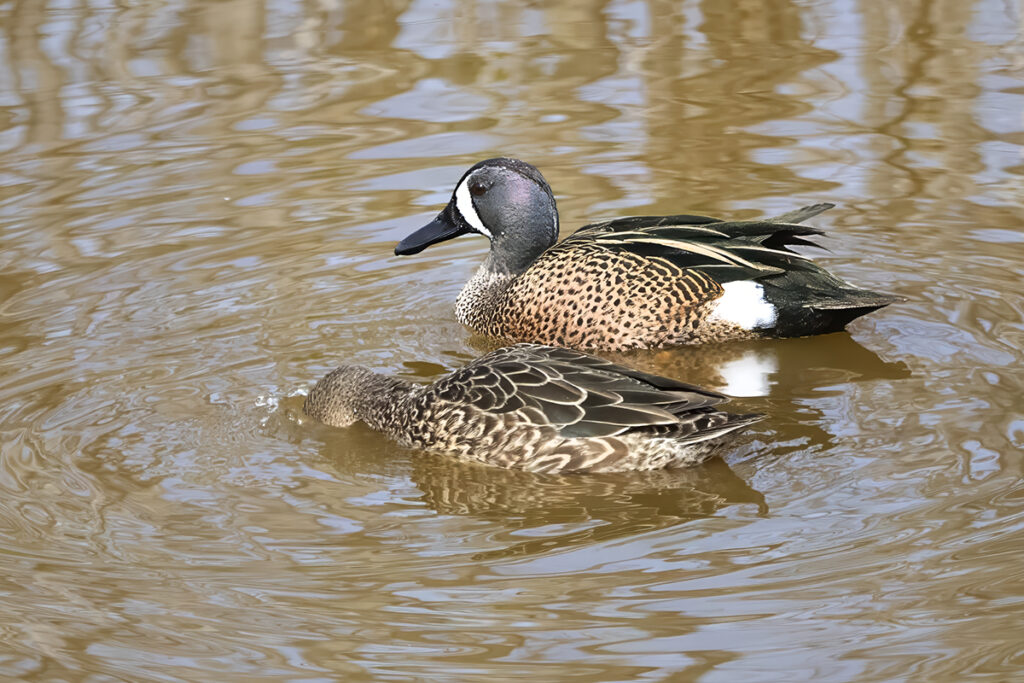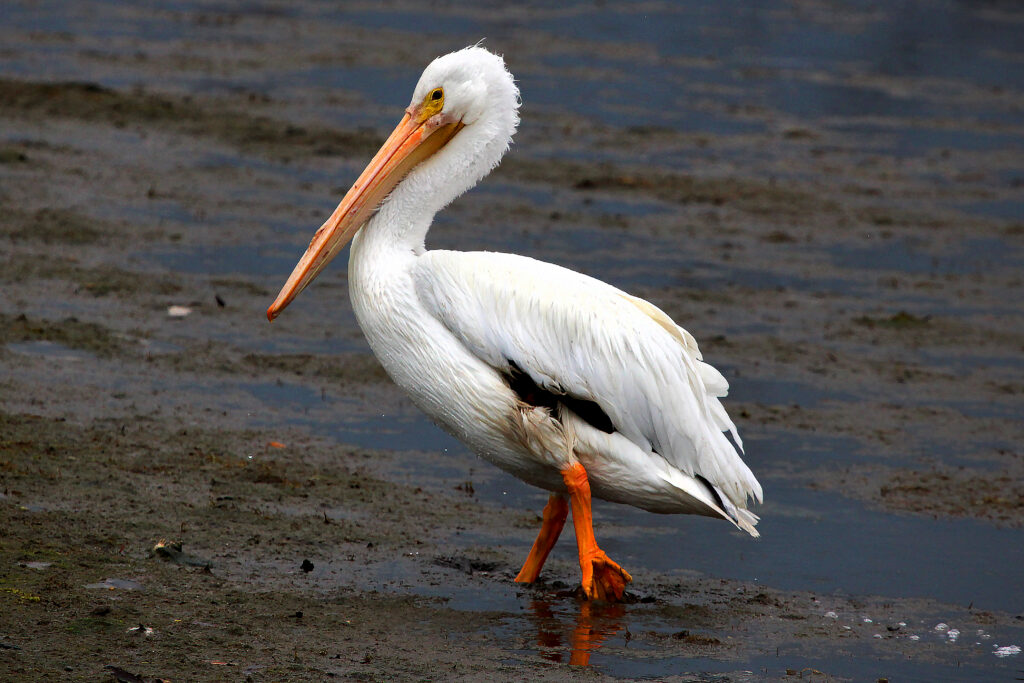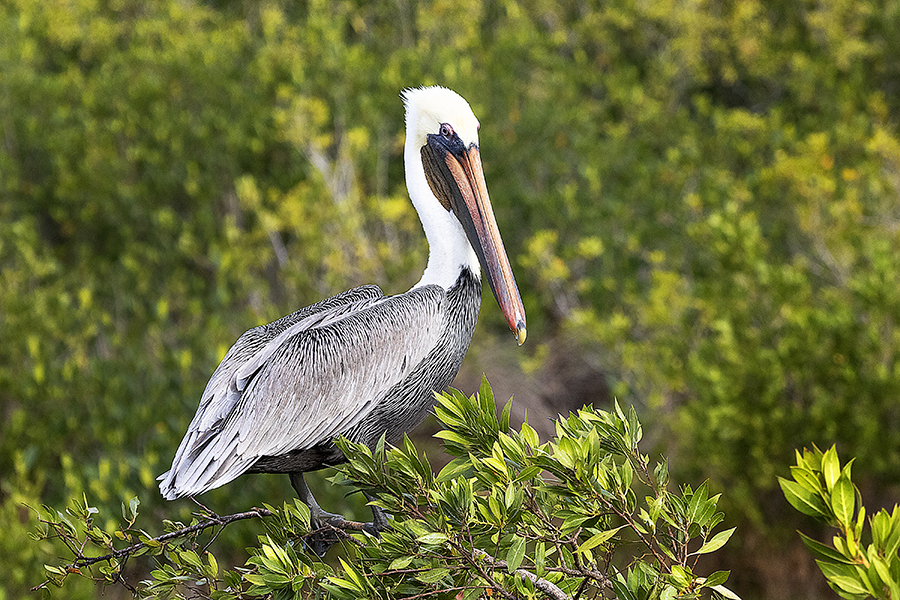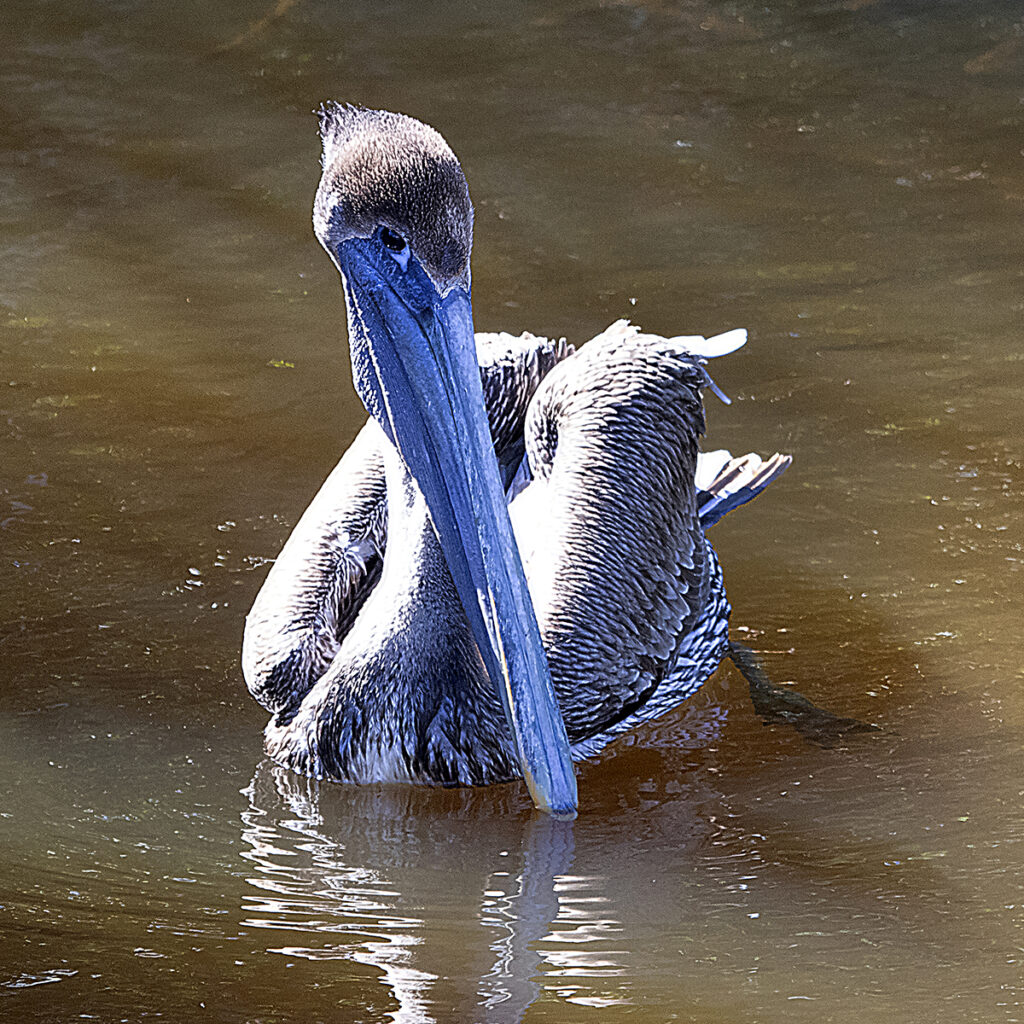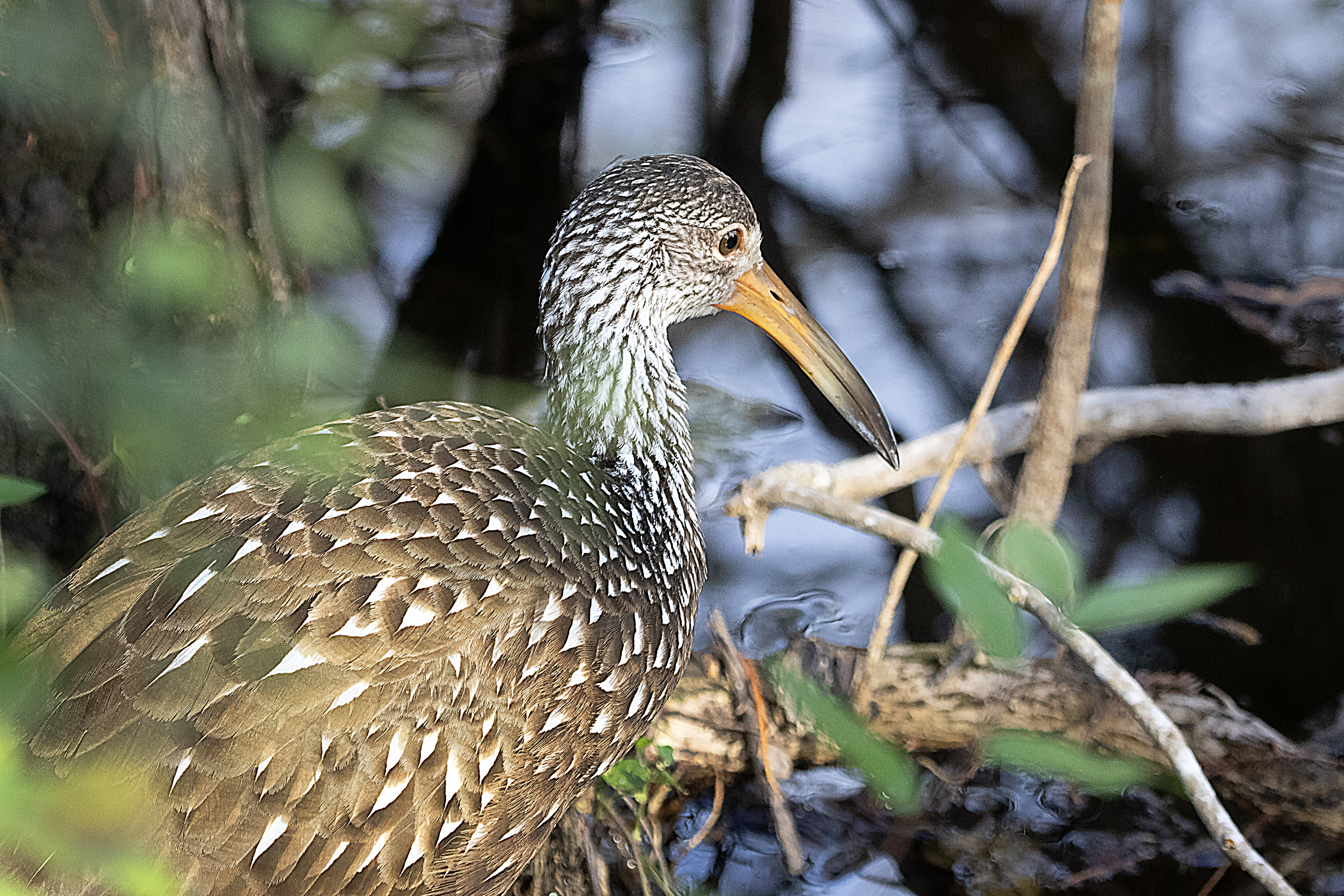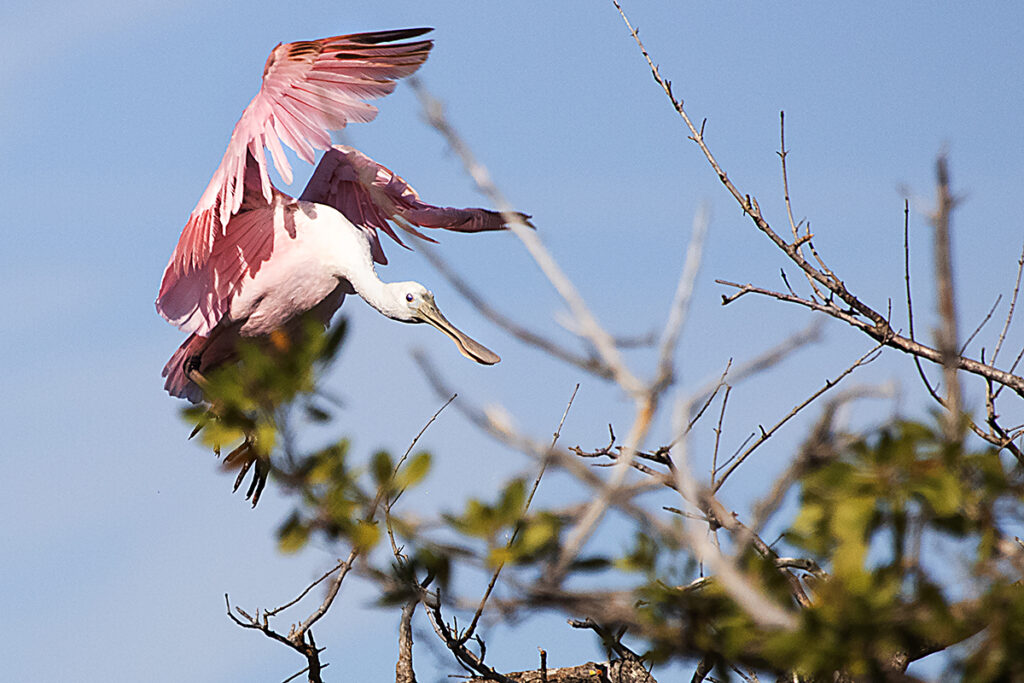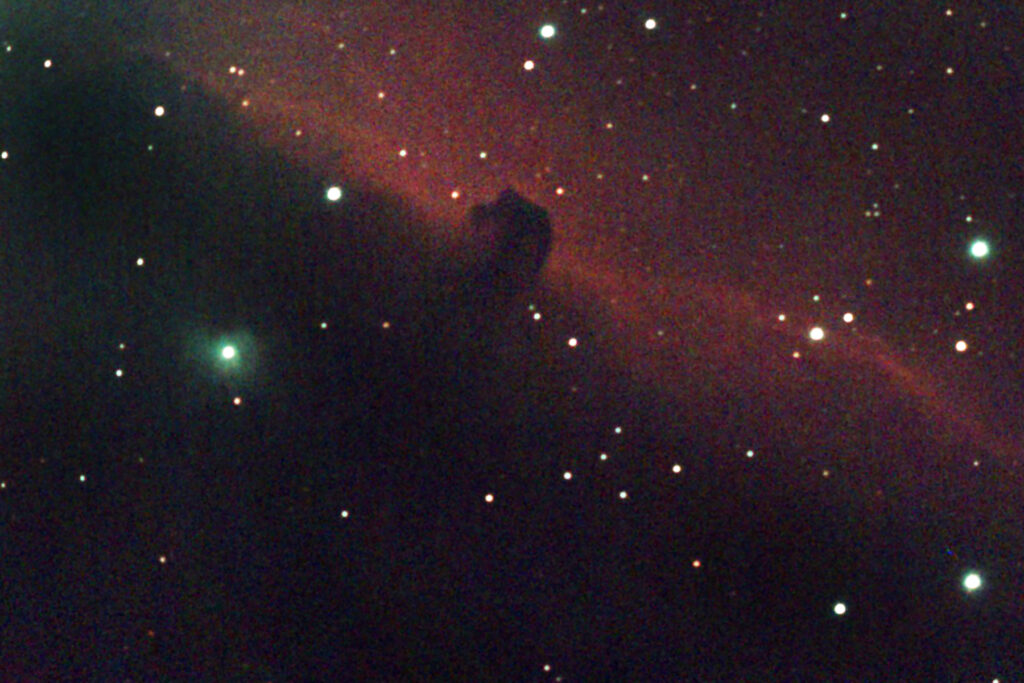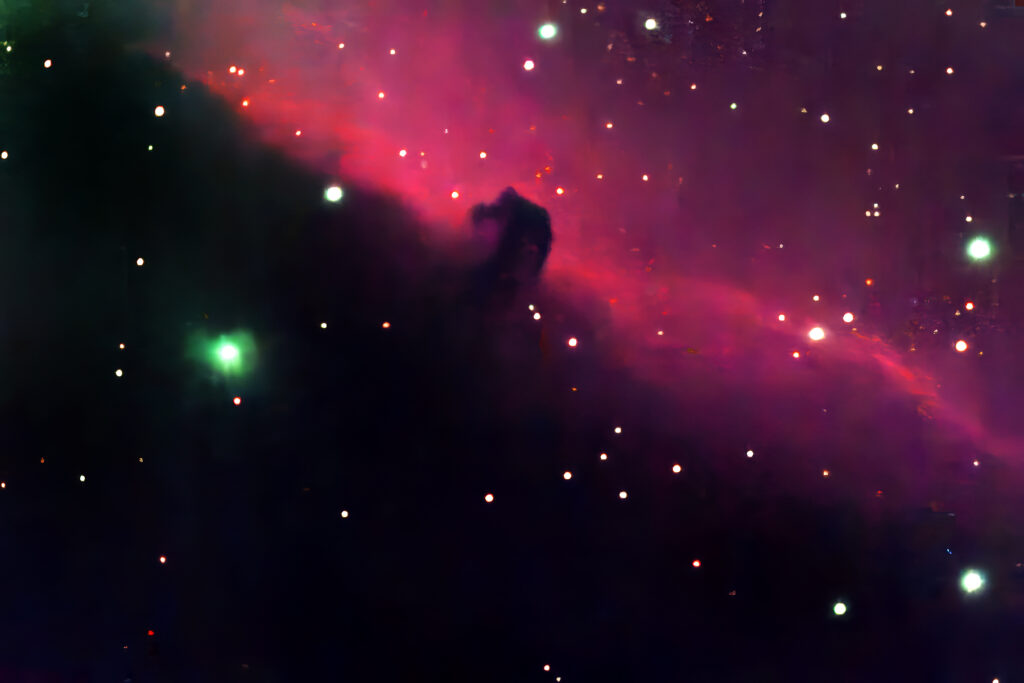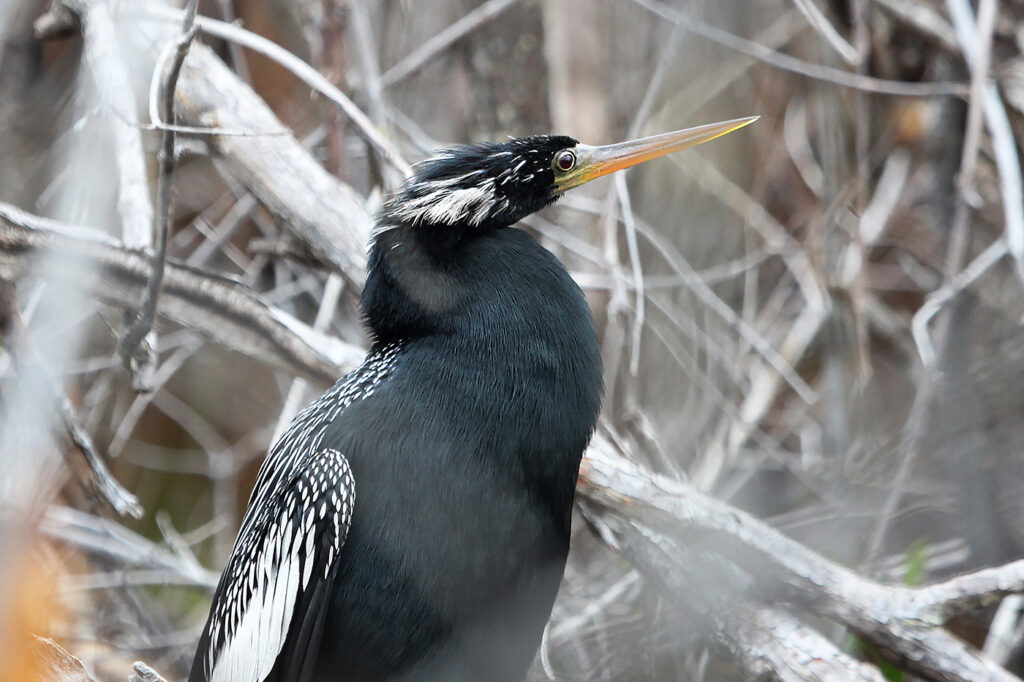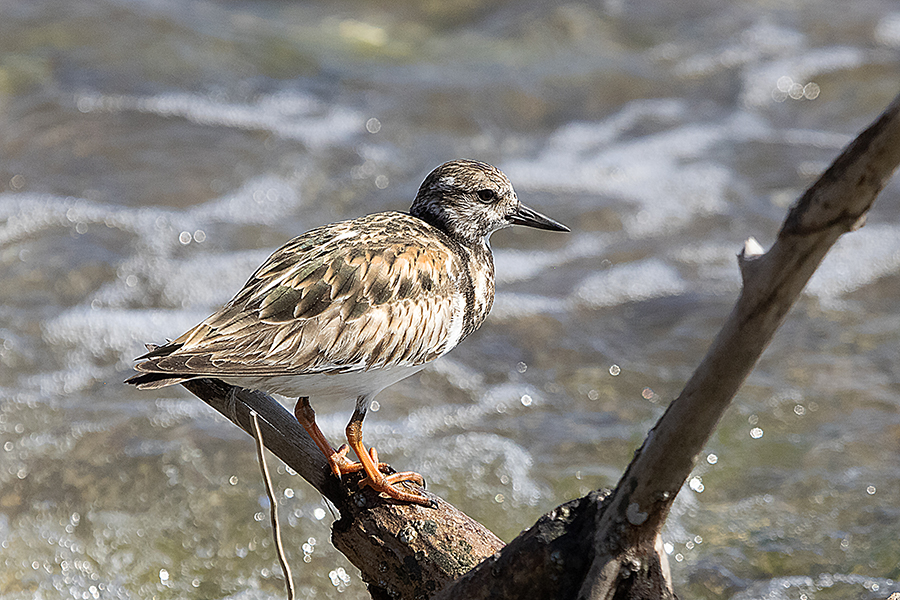
There are so many lovely birds in Southwest Florida. Today I return to the shore birds and specifically to the ruddy turnstone (Arenaria interpres). The wikipedia defines the turnstone as a cosmopolitan bird. Photographing it with the skyscrapers of Fort Myers in the background makes you think cosmopolitan might refer to “near city,” but in fact, it means “widely distributed around the world.”
You are seeing lots of brownish birds along the Gulf Coast shore and some of the rangers and volunteers carry pamphlets showing size, leg size, beak length, and beak curve as a means of identification. I found the ruddy turnstone of Figure 1 amongst some mangrove debris from the recent hurricane at Lovers Key in Fort Myers, FL

